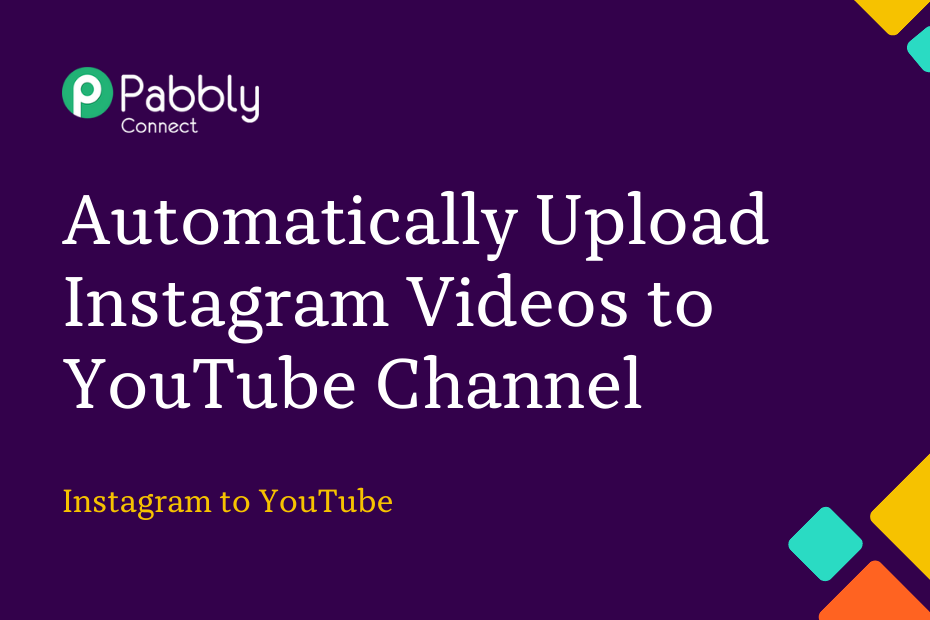In this post, we will look at how you can integrate Instagram with OpenAI and YouTube – following this, each time you upload a new video to Instagram, it will automatically be uploaded to your YouTube channel as well.
This automation requires a one-time setup, for which we will use Pabbly Connect.
We will first link Instagram with Pabbly Connect to capture the videos, then link Pabbly Connect with OpenAI to generate video descriptions, and at last, upload the same video to YouTube.
Steps to Upload Instagram Videos to YouTube Channel Automatically
1. Sign In / Sign Up to Pabbly Connect and Create a Workflow
2. Establish a Connection between Instagram and Pabbly Connect
3. Setup OpenAI as the Action App to Generate the Description
4. Setup YouTube as the Action App to Fetch Category List
5. Setup YouTube as the Action App to Upload Videos
6. Add Delay to the Workflow
7. Setup YouTube as the Action App to Check Upload Status
Step 1:- Sign In / Sign Up to Pabbly Connect and Create a Workflow
A. Sign In / Sign Up
To begin this process, visit Pabbly Connect and create your account by clicking on the ‘Sign Up Free’ button. You can also click on Sign In if you already have an account.
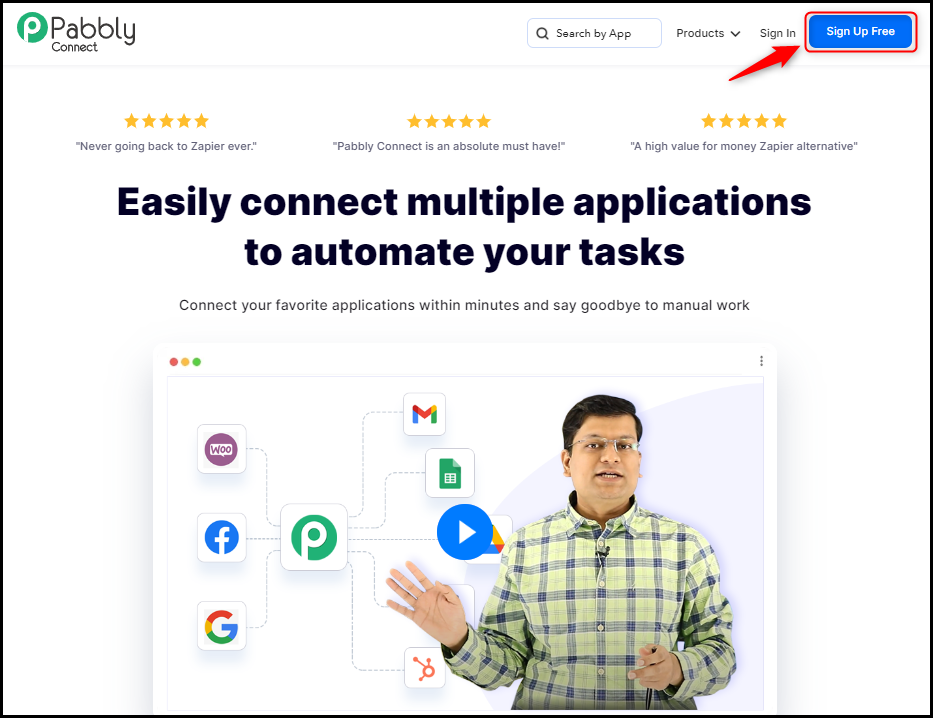
Click on the Pabbly Connect ‘Access Now’ button

B. Create Workflow
To create a new workflow, click the ‘Create Workflow’ button.
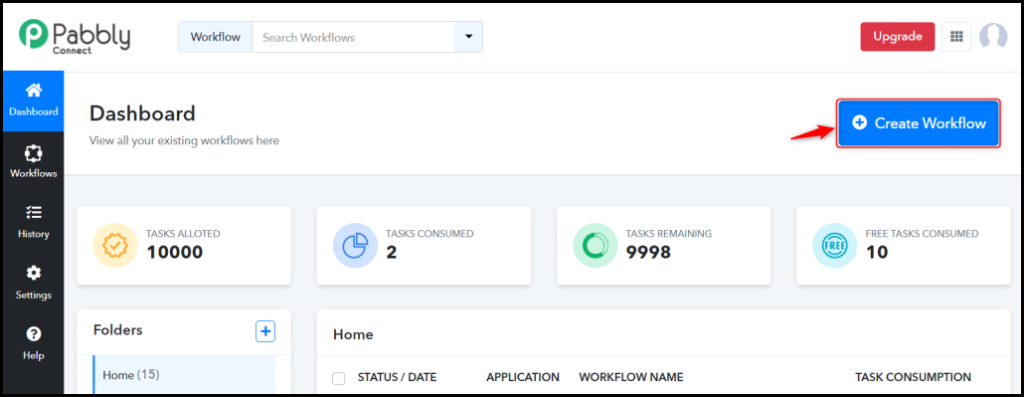
Name your workflow, and click on ‘Create’.

Step 2:- Establish a Connection between Instagram and Pabbly Connect
We will now look at the steps through which we will establish a link between Instagram and Pabbly Connect. This will help us capture details of the newly uploaded posts.
A. Trigger App
Trigger allows us to choose the application that will receive the data for Pabbly Connect. In our case, it would be Instagram.
Choose ‘Instagram’ as the Trigger App, select ‘New Media Posted in My Account’, and click on ‘Connect’.
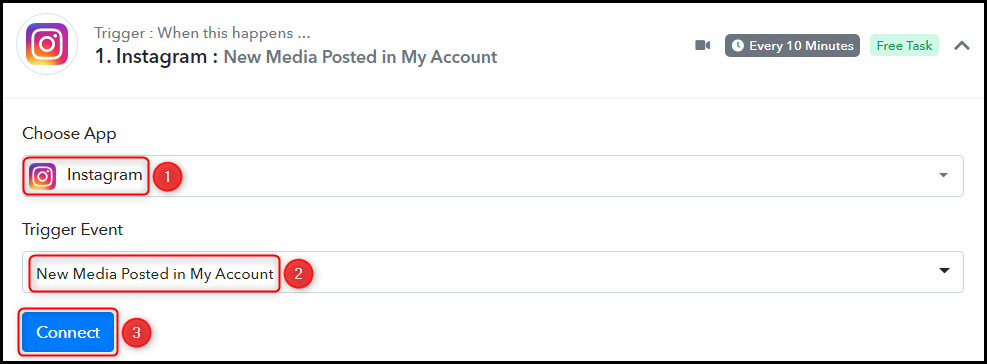
B. Connect Instagram Account
To connect with your Instagram account, select ‘Add New Connection’ and click on ‘Connect With Instagram’. Also, grant the authorization.
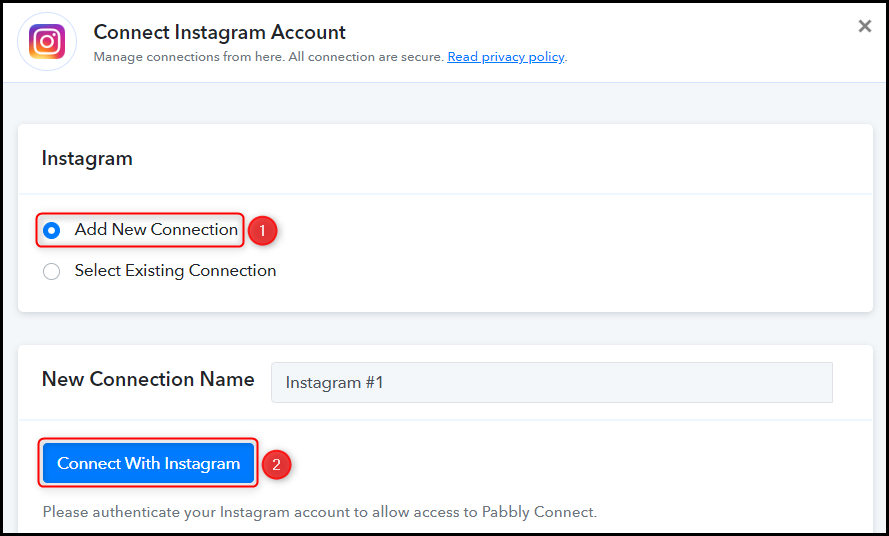
Select the Instagram Account from where you want to capture the posts, and click on ‘Save & Send Test Request’.

Expand Response Receive, where the details of your latest post must be visible, thus confirming the established connection.
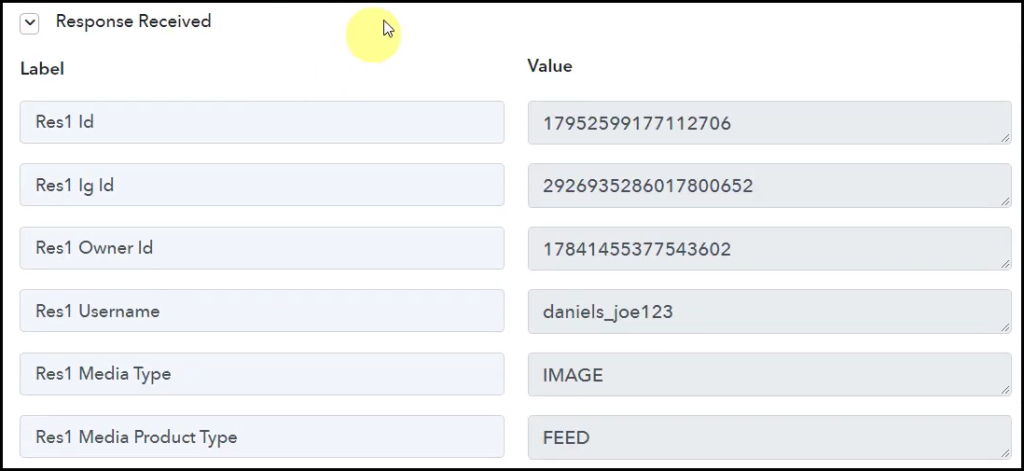
Step 3:- Setup OpenAI as the Action App to Generate the Description
Action allows us to choose the application that will get executed by the workflow trigger.
Since YouTube requires us to upload the video along with a description, we will write one using OpenAI. Therefore, OpenAI will be our Action App.
A. Action App
Choose ‘OpenAI’ as the Action App, select ‘Generate Content’ as an Action Event, and click on ‘Connect’.
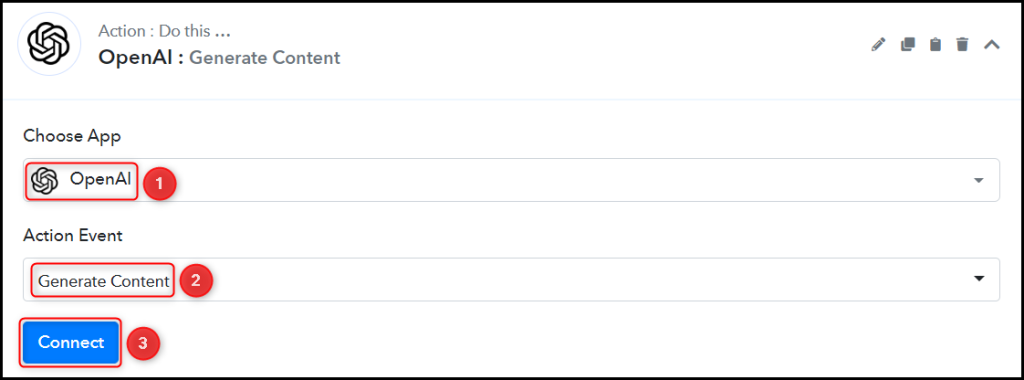
B. Connect OpenAI Account
To connect with your OpenAI account, select ‘Add New Connection’. You will be prompted to enter your API Token. Find your API Token by clicking on the ‘OpenAI API Keys page’ button.

Generate and copy your API Token, paste it into its given field, and click on ‘Save & Send Test Request’.
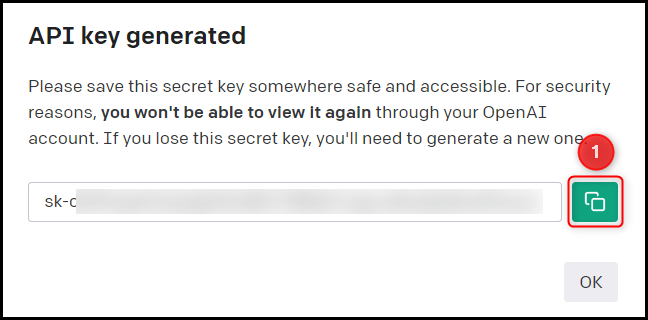

Select the AI Model you want to use for generating the article.

C. Enter / Map the Necessary Fields
Now that you have connected your OpenAI account, you need to map the necessary details from the above step. Mapping ensures our data remains dynamic and changes as per the received responses.
Compose a Prompt by mapping the details from the step above.


Similarly, select/enter other fields, leaving the unnecessary ones empty, and click on ‘Save & Send Test Request’.

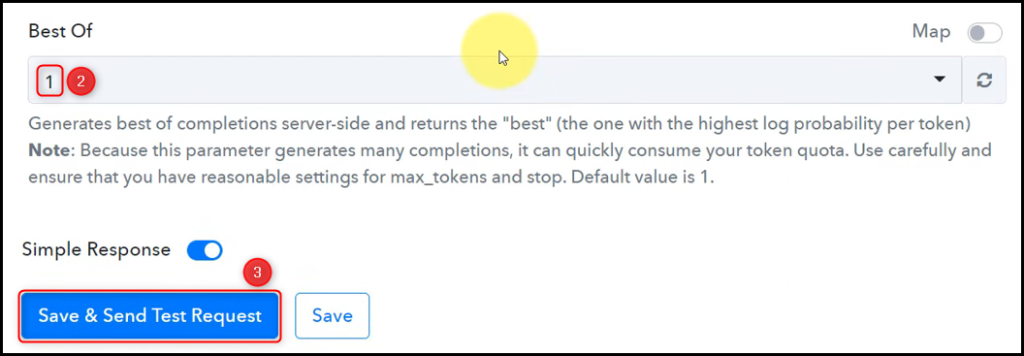
As soon as you click on Save & Send Test Request, OpenAI will automatically write a description for the captured video.

Step 4:- Setup YouTube as the Action App to Fetch Category List
Action allows us to choose the application that will get executed by the workflow trigger.
Before uploading the captured posts to YouTube, we will first capture the category list.
A. Action App
Choose ‘YouTube’ as your Action App, select ‘List Video Categories’ as an Action Event, and click on ‘Connect’.

B. Connect YouTube Account
To connect with your YouTube account, select ‘Add New Connection’ and click on ‘Connect With YouTube’. Also, grant the authorization.

Enter the Country Code, and click on ‘Save & Send Test Request’.

When you click on Save & Send Test Request, a list of categories will automatically be captured.

Step 5:- Setup YouTube as the Action App to Upload Videos
Now that we have captured the Instagram posts and video category list, all we need is to upload those posts to our YouTube channel.
A. Action App
Choose ‘YouTube’ as the Action App, select ‘Upload Video (Beta) as an Action Event, and click on ‘Connect’.

B. Establish Connection
Since we are already connected to the YouTube account, all we need is to ‘Select Existing Connection’ and click on ‘Save’.
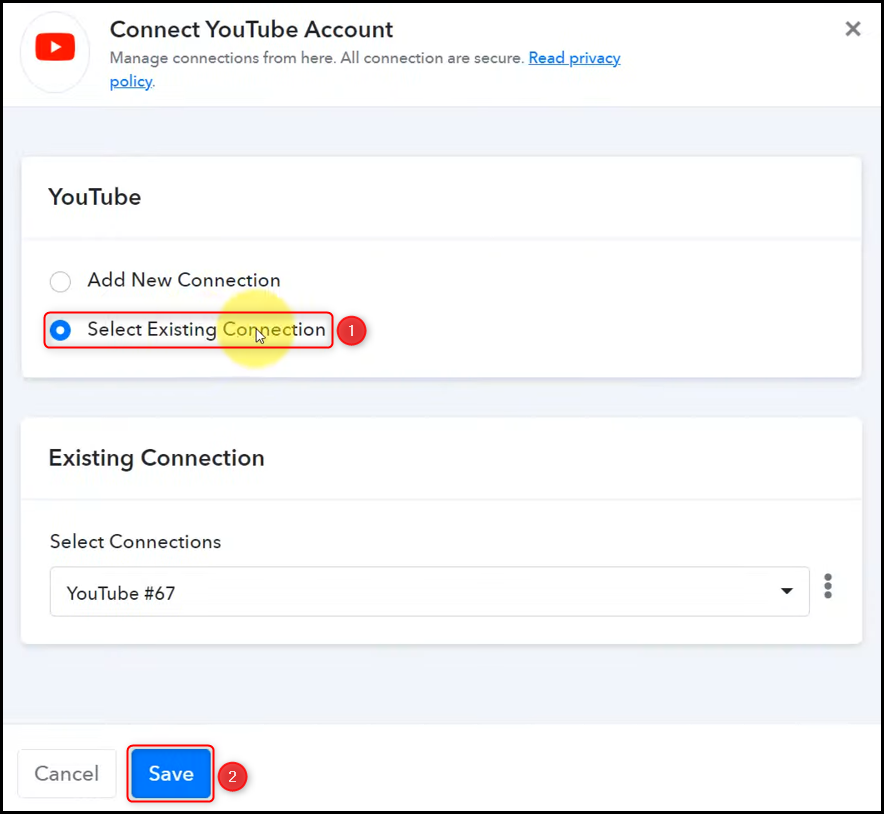
Select the Channel ID where you want to upload the video.

C. Map Necessary Fields
Now that you have connected your YouTube account, all you need is to map the details from the step above. Mapping ensures our data remains dynamic and changes as per the received responses.
Map the Video Title from the step above.

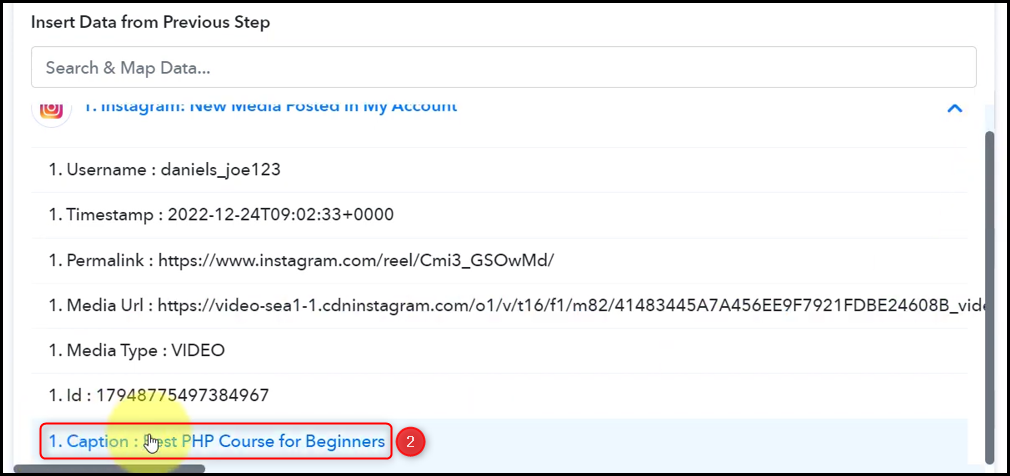

Similarly, map the other fields, leaving the unnecessary ones empty.
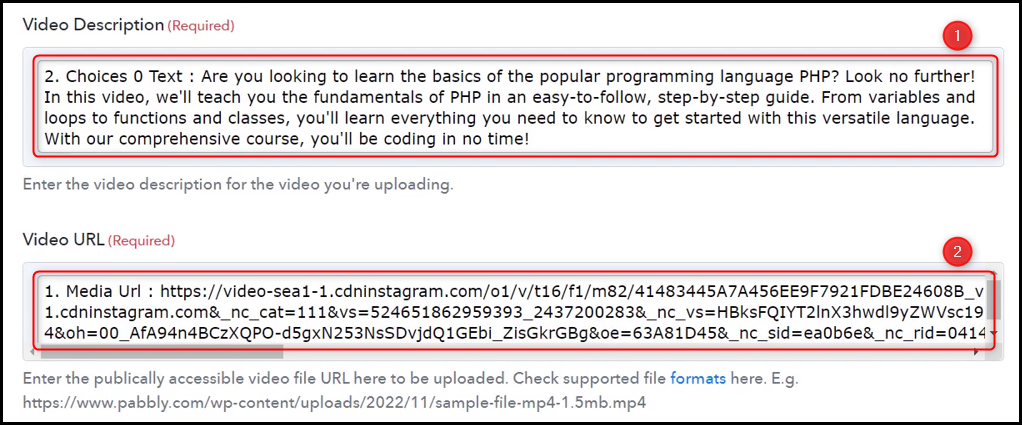
Enter the Category ID, select the Video Visibility Status, and click on ‘Save & Send Test Request’.


The moment you click on Save & Send Test Request, the post will be uploaded to your YouTube channel.
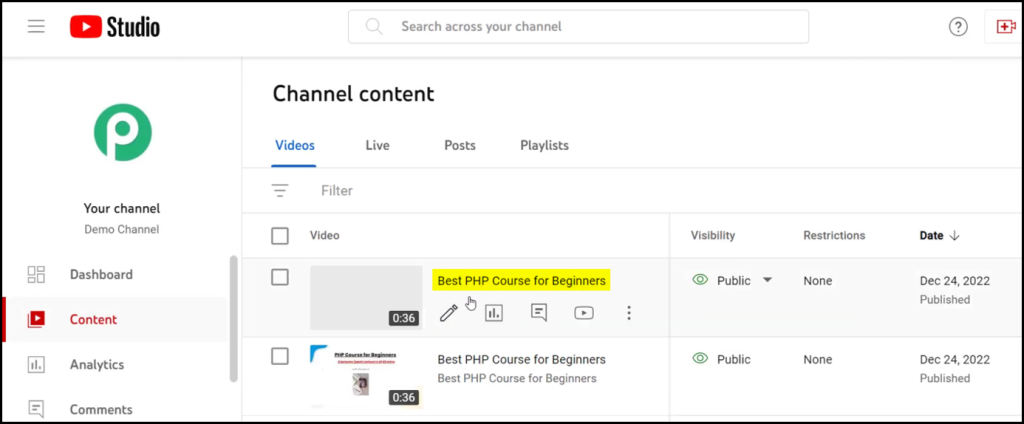
Step 6:- Add Delay to the Workflow
There may be instances where the videos being uploaded to YouTube are big in size, and uploading such videos takes time. For such cases, we will add a Delay to our workflow.
Add a delay of 8 minutes to your workflow, and click on ‘Save & Send Test Request’.
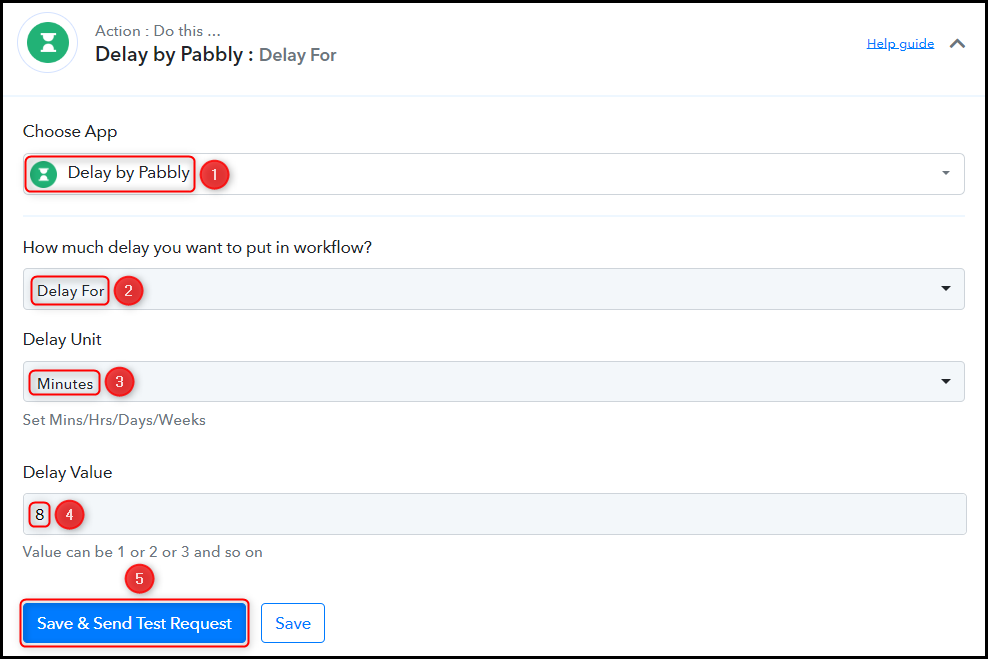
Step 7:- Setup YouTube as the Action App to Check Upload Status
For our final step, we will again set up YouTube as our action app, but this time to check the status of your upload. Doing this will help us in 2 ways – it will capture the video upload status, and also, for some reason the video is not uploaded, it will restart the uploading process.
A. Action App
Choose ‘YouTube’ as the Action App, select ‘Get Video Upload Status (Beta)’ as an Action Event, and click on ‘Connect’.
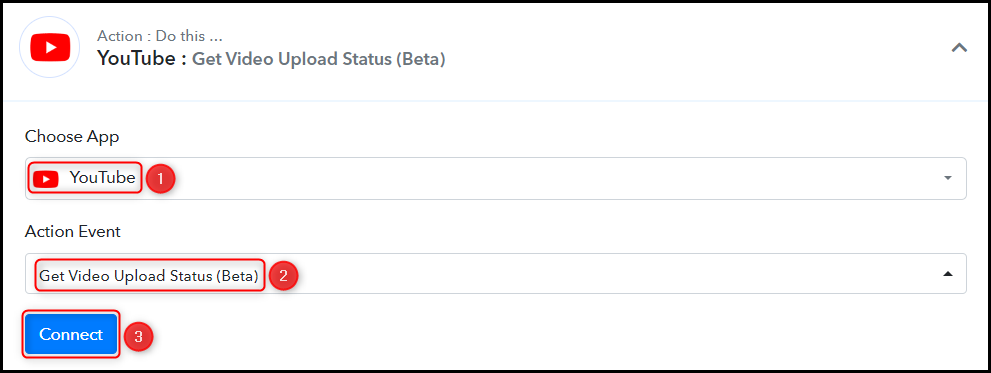
B. Establish Connection
Since we are already connected to the YouTube account, all we need is to ‘Select Existing Connection’ and click on ‘Save’.

Map the Request ID from step 4, and click on ‘Save & Send Test Request’.

The moment you click on Save & Send Test Request, your video upload status will be captured.
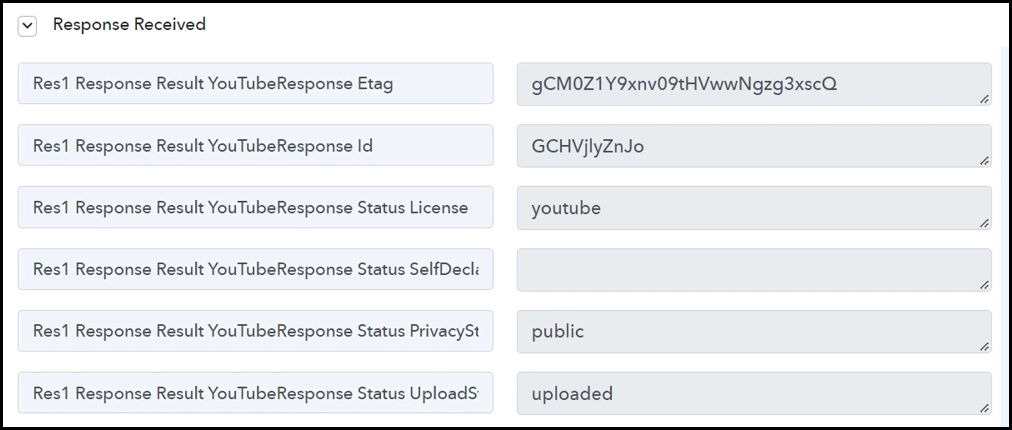
Our automation is complete. We have successfully integrated Instagram with YouTube. Now, each time you upload a new video to your Instagram account, it will automatically be uploaded to your YouTube channel as well.
You can copy this entire workflow by clicking this link.
Sign Up for a free Pabbly Connect account, and start automating your business
Subscribe to our Youtube Channel for more such automation
For any other queries, visit our forum
